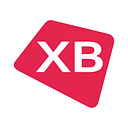The Power of Rapid Application Development: When Speed Meets Flexibility

The natural intention of businesses to deliver their products and services to customers as quickly as possible has led to many models of software development allowing them to do so. The need to revise software requirements repeatedly to better fit the needs of the end-user has created a loop in which the development cycle spins until the product is ready. What we described in these two sentences most probably reminded you of Scrum if you know something about how modern software is made. However, there’s more than that when we speak of iterative development methodologies. Today, we’ll talk about Rapid Application Development, an approach that focuses on customer collaboration and flexibility.
What’s Rapid Application Development
Rapid Application Development or RAD was designed to focus on speed and flexibility. Unlike in traditional linear approaches, like the Waterfall application development model, for example, it focuses on quickly building prototypes and iterating based on feedback provided by the user. This cycle of continuous refinement allows developers to respond to evolving requirements and ensures that the final product aligns closely with what the user needs.
Read Also Software Development Life Cycle (SDLC). All About Kanban Model
A core element of RAD is its collaborative environment, fostering close interaction between developers and clients. This partnership ensures that the development process is transparent, and adjustments can be made without derailing the timeline. Such collaboration results in more tailored software solutions that meet the end-users’ expectations and reduce the risk of costly revisions post-launch.
Rapid application development is most effective for applications where speed and adaptability are essential, such as when user requirements may evolve over time. While it’s not always the best fit for large-scale or highly regulated projects that need comprehensive documentation and planning, RAD’s iterative nature can deliver substantial benefits when rapid delivery and user input are priorities.
Read Also Client Through the Looking-Glass, or How Not to Devalue a Project by the Lack of Documentation
Major Phases or Rapid Application Development

Now, let’s consider four cornerstones of rapid app development.Together, they form the framework of RAD, showcasing its emphasis on flexibility, user collaboration, and iterative development.
1. Requirements Analysis
Unlike conventional methodologies that often rely on exhaustive documentation, RAD prioritizes active collaboration between developers, stakeholders, and end users. The goal of this phase is to establish a shared understanding of the project’s main objectives, high-level requirements, and constraints. Workshops and joint planning sessions are commonly used to encourage open communication and set flexible guidelines. This approach creates a clear vision while maintaining the flexibility needed to address changes down the line.
2. UI/UX Design and Prototyping
Here, developers create quick and functional models of the application that showcase basic elements and key features. These prototypes are far from being fully functional products; instead, they serve as visual and interactive drafts that provide insight into how the final system might look and behave. The iterative nature of this stage allows stakeholders to engage directly with these early models. Immediate feedback helps understand required adjustments and improvements. This ensures that the final product will be closely aligned with user expectations and avoids costly revisions after development.
Read Also How SDLC Prototype Model Helps Build Comprehensive Apps When Requirements Are Unclear
3. Rapid Development and Feedback Gathering
The rapid construction phase turns the refined prototypes into more complete versions of the application. During this stage, development teams focus on coding, integration, and building core features as outlined in the feedback from the prototyping phase. The collaborative environment continues, with regular check-ins and feedback loops involving stakeholders to confirm that the project stays aligned with their needs. Unlike traditional models that wait until the end for user evaluation, RAD incorporates data gathered from the user throughout construction, allowing for ongoing tweaks and improvements. This cycle of building and reviewing ensures that changes can be swiftly implemented without major delays or app scope issues.
4. Product Finalization and Deployment
Now, it’s time for the development team to focus on final app testing, quality assurance, and resolving any last-minute issues identified during construction. The aim is to ensure that the application meets performance, security, and usability standards before it goes live. Training materials and user guides are often created at this point, along with any necessary user training sessions. Once the stakeholders give their approval, the product is deployed to its live environment. RAD projects don’t end abruptly after deployment. Instead, post-launch feedback is encouraged to inform future updates and adjustments, ensuring a product that continues to evolve after initial release.
Read Also Overviewing Main Principles and Upcoming Trends of DevOps
Major Benefits of Using Rapid Application Development (RAD)
Rapid Application Development offers a range of benefits that make it particularly effective for projects requiring speed, flexibility, and user-centric approaches. By promoting a cycle of rapid prototyping and continuous communication, it enhances development efficiency and outcome quality. Let’s look at the main advantages of Rapid Application Development more closely.
Early System Integration and Risk Reduction
A major advantage of RAD is early system integration, which helps to identify and resolve potential issues at an earlier stage of the development process. Rapid Application development incorporates integration as an ongoing activity, which allows teams to uncover compatibility or system-related challenges sooner rather than later. As a result, the likelihood of significant disruptions or last-minute corrections is greatly minimized, leading to a more stable and reliable final product.
Continue reading: https://xbsoftware.com/blog/rapid-application-development-rad/
